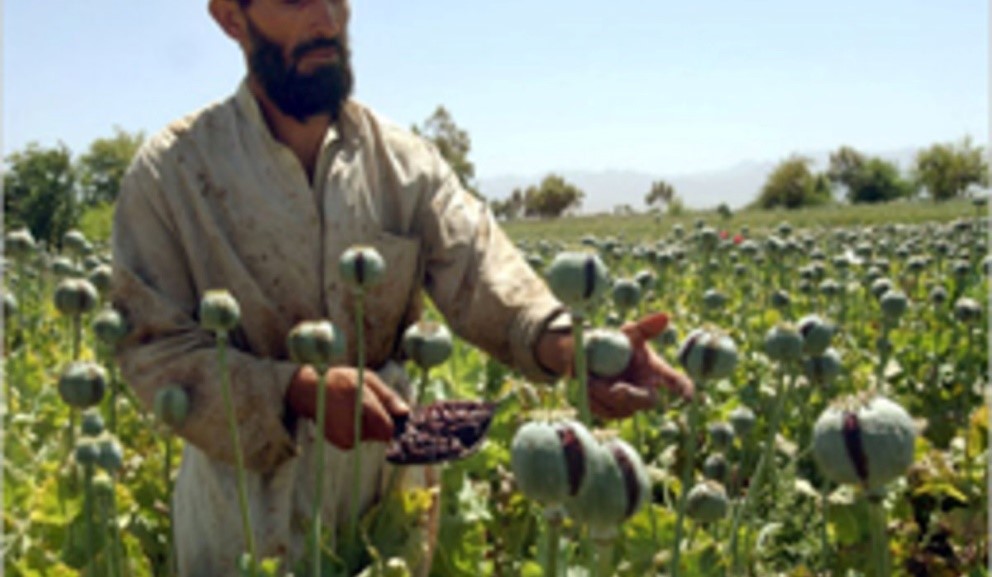Vasu Sharma
15th May 2021

The United Nations Office on Drugs and Crime (UNODC) Opium Survey of Afghanistan, 2020 reports that the country is responsible for 85 percent of the opium supply for the past five years. In the fiscal year that ended in March 2020, a report commissioned by the North Atlantic Treaty Organization (NATO) reports that the Taliban earned around $1.6 billion of which $416 million was earned through production and export of drugs. This revenue is later used for operations of the Taliban. The Taliban imposes a 10% tax on the cultivation of opium, on the conversion of opium into heroin and other forms, and on the export of drugs. Thus, the Drug Economy has become a major source of revenue for the Taliban. Such statistics reveal the grave situation of drug economy in Afghanistan. In the context of the uncertain future of Afghanistan and the ensuing US withdrawal, it becomes pertinent to ask how the pandora box of socio-political-economic aspects of Afghan society could unravel concerning the future of this drug economy.
The drug problem is not new in Afghanistan. It goes back to the days of the Soviet Occupation (1979-1989) when the unemployment and suitable environment for poppy cultivation incentivised the local population to grow opium. Subsequently, the tribal lands on the border of Afghanistan and Pakistan became the hub of opium production. Post-Soviet withdrawal, the Taliban strengthened itself by bringing the warlords and drug lords under the same umbrella. In the year 1996, when the Taliban formed its government, the country became the hub of illicit production and export of drugs.
In 2001, to cater to international support, the Taliban imposed a nationwide ban on opium. However, with the 9/11 attack on US soil and the subsequent Operation Enduring Freedom, the US troops entered Afghanistan and were able to overthrow the Taliban regime. Despite the overthrow of the regime, opium cultivation in the country did not witness any dramatic decrease. From 2002 to 2007, opium cultivation (according to the UNODC Report 2007) was similar to the volume before the imposition of the ban. Such realities pose the question of whether the US troops focused on counter-narcotics in the same manner as it focused on counter-terrorism strategy.
Although there were several measures taken under the counter-narcotics strategy, the efficacy and outcome of these events remain questionable. In 2008, it was estimated that the revenue from Drug Economy was around $50 million. Thus a ‘quasi-combatant’ strategy was adopted by NATO Forces led by the US and the United Kingdom, through which, any element or individual which fuels insurgency was subject to be dealt similarly as an insurgent would be dealt with. The strategy can be observed as an acknowledgment/ realization by policymakers in the Pentagon about how the Drug Economy was significant in raising funds and fuelling the insurgency. Despite this acknowledgment, the area under cultivation and annual opium production did not witness any dramatic transition.
From 2008 to 2014, there was no dramatic transition but several dips and lows. This was due to saturation of prices, which was recovered by 2016, the year when production and supply were recorded highest. In 2017, the US forces conducted Operation Iron Tempest. With around 200 airstrikes, the drug laboratories and facilities were targeted. The area under poppy cultivation did decrease but did not witness anything lower than 2016.
The 2014 – 2024 decade was expected to be a decade of transformation for Afghanistan. Since then there has been the announcement of US withdrawal and rounds of intra-Afghan peace talks. Amidst these events, the relationship between drugs and the Taliban poses a major challenge to the peace talks and the US withdrawal. Thus it becomes necessary for the Afghan government and the US to ensure that this issue of the drug economy is on the table to be discussed.
It becomes imperative for the Afghan government to ensure that there are better opportunities are available for citizens of Afghanistan and to consider other drivers of the economy. However, the challenge persists because the provinces, which produce and export the highest numbers of Opium, are Helmand and Kandahar, located in South-East Afghanistan and under the control of the Taliban.
There have been several arguments regarding legalizing opium. However, under the Ghani government, it does not stand as an option since the provinces, which record the highest cultivation of Opium, are under the control of the Taliban. Furthermore, if a situation arises post the withdrawal of US forces, that the Republic falls and the nation is transformed into an Islamic Emirate and if opium is legalized, it won’t give the profits it renders being in the black market.
History is witness to the fact that opium production dramatically decreased only when the Taliban intended to, way back in 2001. In the last twenty years, efforts to break the linkage between the drug economy and the Taliban have costed around nine billion dollars. The resurgence of Taliban as a political and military force in Afghanistan has raised a number of questions regarding the future of the war torn country. While external players and regional stakeholders monitor the treacherous path to peace in Afghanistan, it is all the more relevant to put the drug menace right at the centre of any talks with the Taliban.
*The author is a Post Graduate Research Scholar at the Department of Geopolitics and International Relations, Manipal Academy of Higher Education, Manipal.
Disclaimer: The views expressed in the article are those of the author
![]()

